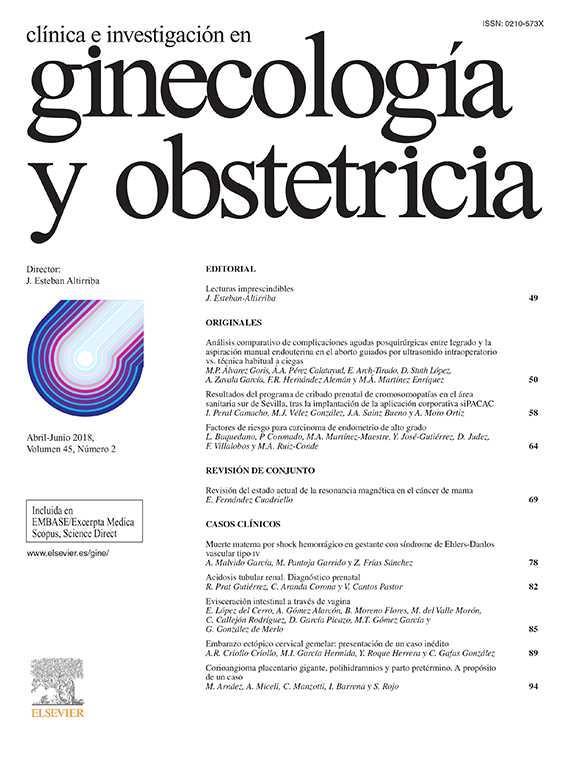The objective was to determine the value of intrapartum transcervical amnioinfusion on the disminution of neonatal acidosis and the caesarean section rate due to foetal distress in gestants with oligohydramnios not caused by premature rupture of the membranes. An intervention protocol was designed, with randomization of the participants. The study was carried out in the University Hospital «Virgen de las Nieves» in Granada, and the women considered suitable were those who started labour with intact membranes and oligohydramnios, this being defined on an index as amniotic fluid being less than 8. The sample size calculated to be able to conclude the hypothesis was of 56 in each group. The case study group had intrapartum amnioinfusion and foetal monitoring of oxygen saturation and heart rate. The control group had the same protocol, except the amnioinfusion. In both groups acid-base balance of the newborns was measured. In the amnioinfusion group 10.7% had a caesarean section, of which 1.8% were for foetal distress. In the control group the values were, respectively, 17.9%, and 10.7% (pNS). Arterial pH of less than 7.20 at birth was found to be 14.3% in those foetus who had amnioinfusion, and 32.4% in the control (p < 0.05). We conclude that although amnioinfusion was not shown to be useful in reducing caesarean section levels for foetal distress in the sample studied, it did improve foetal metabolic state at birth.
El objetivo fue determinar el valor de la amnioinfusión transcervical intraparto en la disminución de acidosis neonatal y de la tasa de cesáreas por sufrimientofetal en gestantes con oligoamnios no causado por rotura prematura de membranas. Se realizó un diseñode intervención, con aleatorización de las participantes, siendo el ámbito del estudio la población de gestantes atendidas en el Hospital Universitario Virgende las Nieves de Granada. Fueron consideradas sujetos de estudio las gestantes con membranas íntegrasque iniciaron el parto con oligoamnios, definidocomo un índice de líquido amniótico menor de 8. Eltamaño muestral calculado para poder concluir las hipótesis fue de 56 casos en cada grupo. Al grupo decasos se le practicó amnioinfusión intraparto con monitorización fetal de la saturación de oxígeno y la frecuencia cardíaca. Al grupo control se le sometió almismo protocolo, salvo en lo referente a la amnioinfusión, determinándose en ambos casos el equilibrioácido-base de los recién nacidos. En el grupo de amnioinfusión se practicaron un 10,7% de cesáreas, delas cuales el 1,8% lo fueron por sufrimiento fetal; enel grupo control los valores respectivos fueron 17,9 y10,7% (p: NS); en cuanto a la frecuencia de pH arterial al nacimiento menor que 7,20, éste fue detectadoen el 14,3% de los fetos sometidos a amnioinfusión y en el 32,4% de los controles (p < 0,05). Concluimosque aunque la amnioinfusión no demostró ser de utilidad para reducir la tasa de cesáreas por sufrimientofetal en la muestra estudiada, sí consiguió mejorar elestado metabólico fetal al nacimiento.






